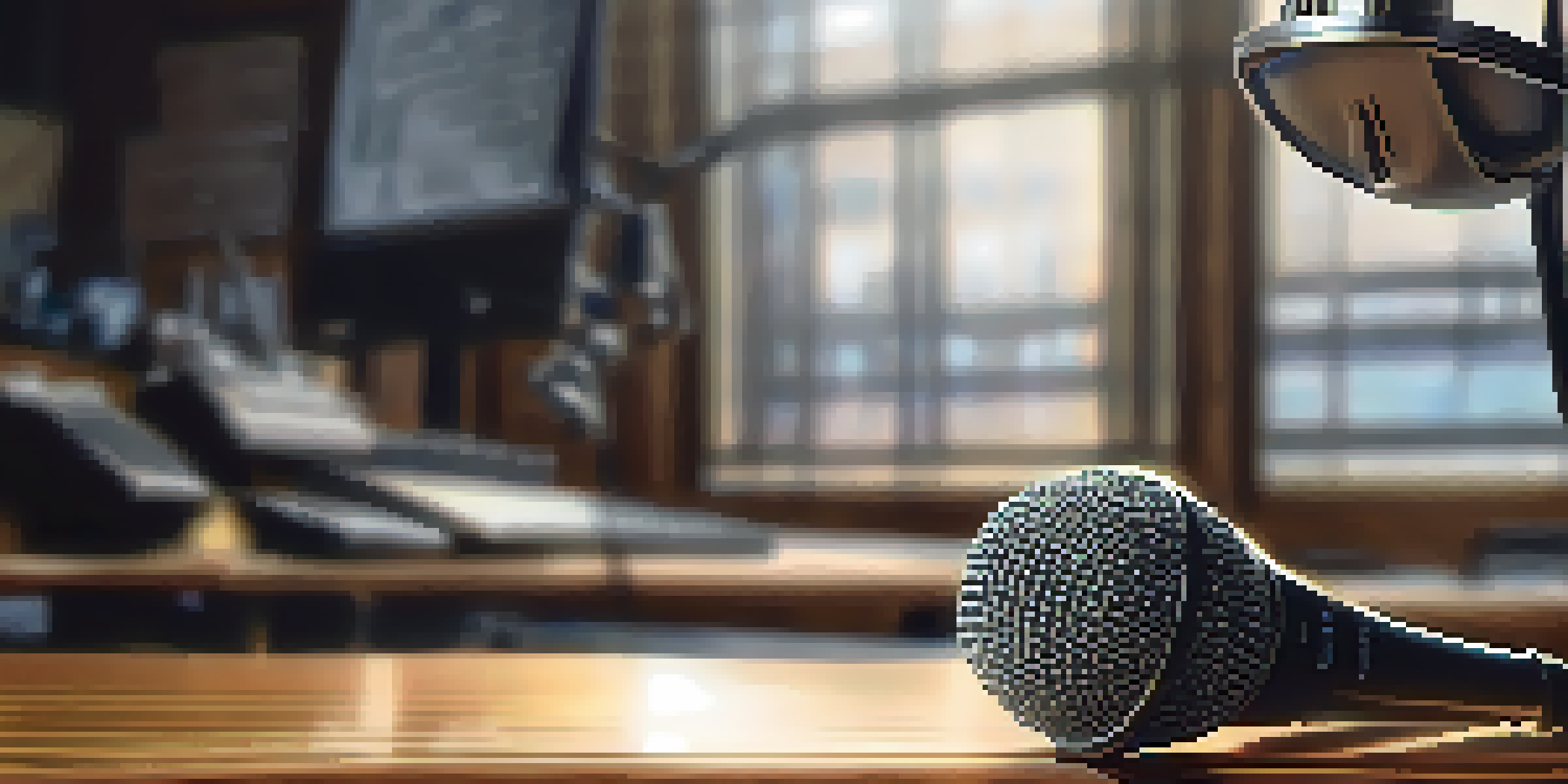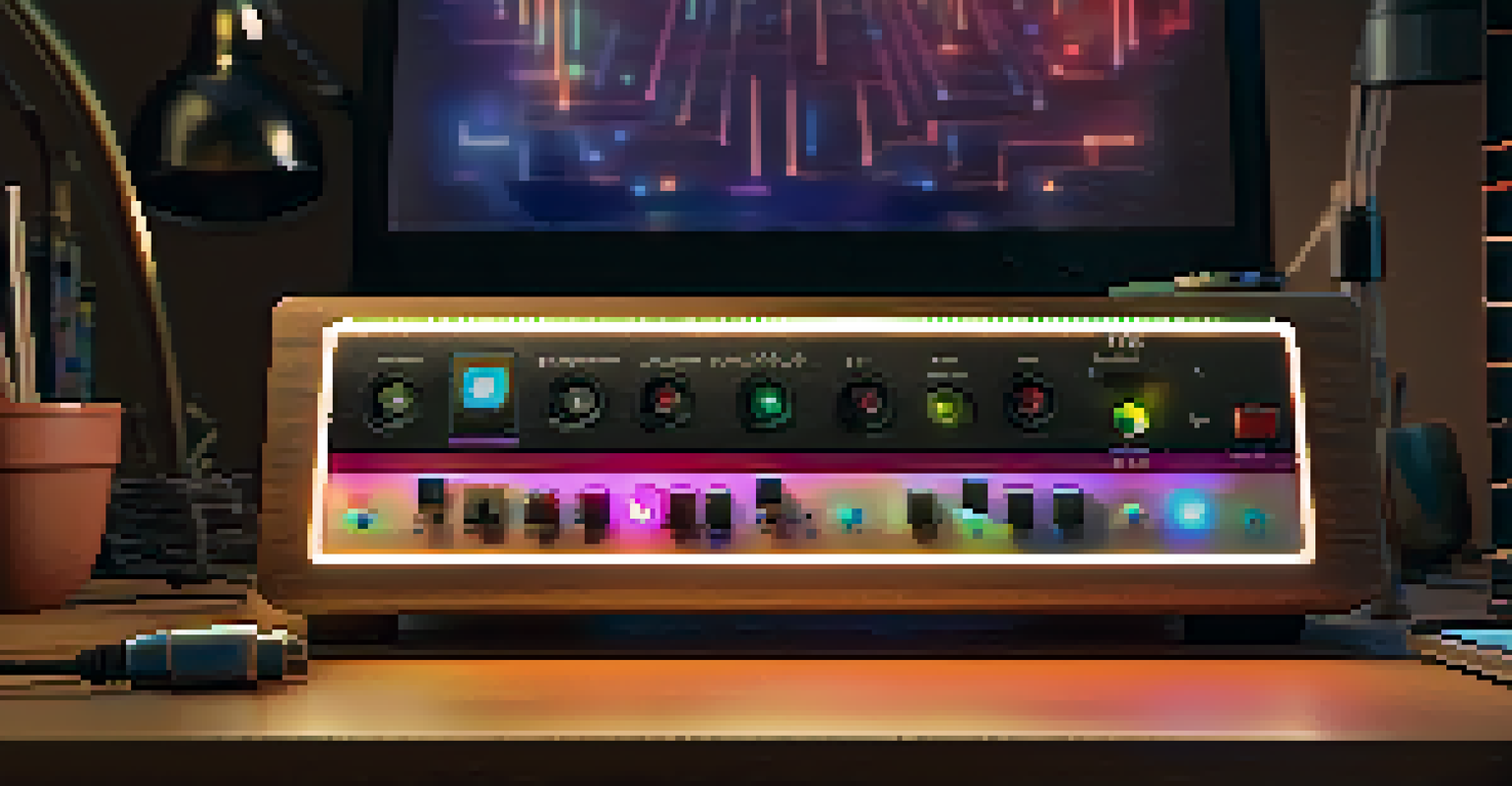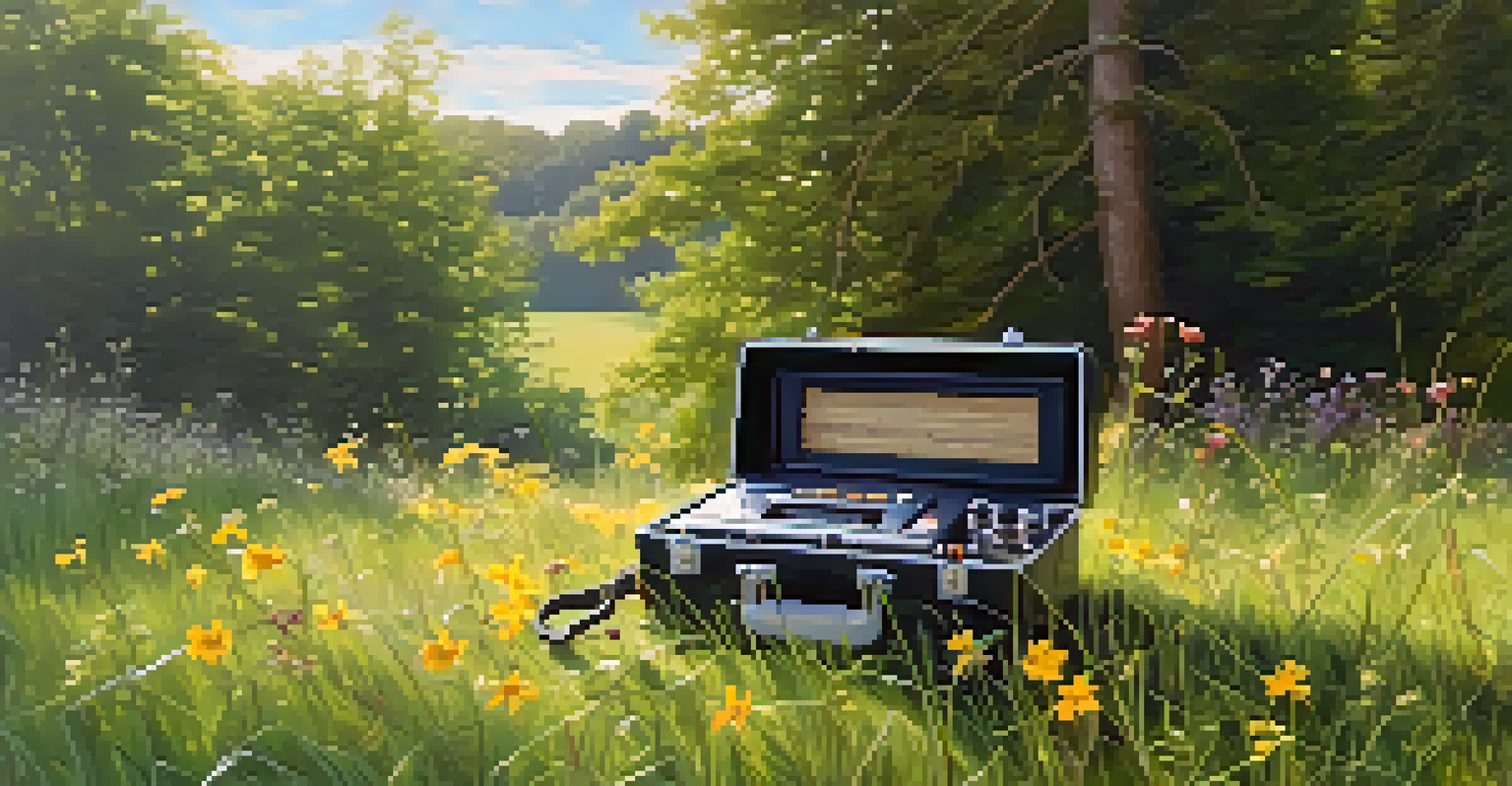Recording Techniques for High-Quality Sound Design Elements

Understanding the Basics of Sound Recording
Before diving into recording techniques, it's crucial to understand the basics of sound. Sound is created by vibrations that travel through the air, which are then captured by microphones. These vibrations can vary widely in frequency and amplitude, shaping the character of the sound you want to record. Knowing this helps you make informed decisions about your recording setup.
Sound is the vocabulary of nature.
Microphones are essential tools in this process, each with its unique characteristics. For instance, dynamic microphones are great for loud sound sources, while condenser microphones excel in capturing subtle nuances. Choosing the right microphone for your sound design elements sets the foundation for achieving high-quality recordings.
Finally, don't overlook the importance of the recording environment. Ideally, you want a quiet space with minimal echo and background noise. Soundproofing your recording area can significantly enhance the clarity of your recordings, allowing your design elements to shine.
Choosing the Right Microphone for Your Project
Selecting the appropriate microphone is a pivotal step in recording high-quality sound. Consider the type of sound you are capturing; for instance, a shotgun microphone is perfect for directional sound, while a lavalier microphone suits interviews and dialogue. Each microphone type offers distinct advantages, so choose one that aligns with your project needs.

In addition to type, pay attention to the microphone's frequency response. This refers to the range of frequencies the microphone can capture effectively. A microphone with a flat frequency response will reproduce sounds accurately, while those with boosted frequencies can enhance specific elements to make them stand out in your mix.
Understand Sound Basics
Grasping how sound works, including vibrations and microphone types, is essential for effective recording.
Lastly, experiment with microphone placement. The difference between a recording that sounds average and one that sounds fantastic often comes down to how close or far the microphone is from the sound source. Small adjustments in positioning can yield significant changes in the quality and character of the sound.
Utilizing Audio Interfaces for Enhanced Sound Quality
An audio interface is a vital component in the recording chain, acting as a bridge between your microphone and computer. It converts analog signals from your microphone into digital data that your computer can process. Investing in a high-quality audio interface can dramatically improve the clarity and fidelity of your recordings.
The beautiful thing about sound is that it can be manipulated and changed in so many ways. It’s a canvas for creativity.
Additionally, many audio interfaces come equipped with preamps that boost the microphone signal. A good preamp can add warmth and depth, which is particularly beneficial for vocal recordings. This enhancement can make a noticeable difference in the final output, giving your sound design elements a polished finish.
Don't forget to explore the software that accompanies your audio interface. Most come with digital audio workstation (DAW) software that allows for precise editing and mixing. Familiarizing yourself with these tools can help you unlock the full potential of your recordings.
Capturing Ambience for Depth and Richness
Ambience plays a crucial role in sound design, adding depth and context to your recordings. Capturing ambient sounds can enhance the realism of your projects and create a more immersive experience for the listener. Consider recording natural sounds like wind, water, or city noise to layer beneath your main audio elements.
Using stereo microphones or a field recorder can help capture a wider soundstage, making your ambient recordings feel more three-dimensional. These techniques create a sense of space that transports the listener into the scene you're designing. It's all about crafting an audio landscape that feels alive.
Choose the Right Microphone
Selecting the appropriate microphone and its placement can significantly enhance the quality of your recordings.
Lastly, remember to mix these ambient sounds carefully. While they add richness, overdoing it can overshadow the primary audio elements. Aim for a balance that enhances the overall sound without distracting from the main focus of your design.
Layering Sounds for Creative Sound Design
Layering sounds is a powerful technique in sound design, allowing you to create complex audio textures. By combining multiple recordings of different elements, you can achieve unique sonic results that captivate your audience. For instance, layering various percussion sounds can create a more dynamic rhythm that drives your project forward.
When layering, consider the frequency spectrum of each sound. Ensure that each layer occupies its own space in the mix to avoid muddiness. Using equalization (EQ) can help carve out space for each sound, allowing them to coexist harmoniously. This way, every layer contributes to the overall richness of the sound design.
Additionally, don't shy away from experimenting with effects like reverb and delay when layering sounds. These effects can add depth and movement, making the overall sound more engaging. The key is to experiment and find combinations that resonate with your project's vision.
Using Effects to Enhance Recorded Sounds
Effects processing is an essential aspect of sound design, allowing you to manipulate and enhance your recordings creatively. Common effects include reverb, delay, compression, and distortion, each serving a specific purpose. For instance, reverb can add a sense of space, while compression can help balance the dynamics of a sound.
When applying effects, it's crucial to consider the context of your sound. Too much reverb on a vocal track may create a wash of sound that loses clarity, while the right amount can add warmth and presence. Experimenting with different settings can yield surprising results that elevate your recordings.
Mixing for Cohesive Sound
Effective mixing techniques balance various audio elements, ensuring clarity and depth in the final product.
Moreover, layering effects can lead to innovative sound design techniques. For instance, combining delay with reverb can create a lush, expansive sound that invites listeners in. Just remember to keep the overall mix in mind, ensuring that effects enhance rather than overwhelm the primary audio elements.
Mixing Techniques for Optimal Sound Quality
Mixing is where all your hard work in recording and designing comes together. It's the process of balancing various audio elements to create a cohesive final product. Techniques like panning, volume adjustments, and EQ help ensure that each sound has its place in the mix, contributing to the overall clarity and impact.
A crucial aspect of mixing is understanding dynamics. This involves controlling the volume levels of different sounds to prevent any single element from overpowering others. Using tools like compressors can help manage dynamic range and maintain a consistent audio level throughout your project.

Finally, always trust your ears during the mixing process. What sounds good to you may not follow strict rules, which is why experimentation is key. Don't hesitate to make bold choices that reflect your creative vision, as mixing is as much about art as it is about technique.